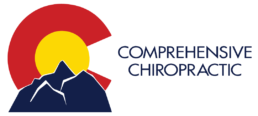Welcome to a journey of elbow exploration, where we delve into the intricacies of two common but often misunderstood conditions – Tennis Elbow (Lateral Epicondylitis) and Golfer’s Elbow (Medial Epicondylitis). Elbow pain isn’t reserved for the tennis court or golf course; it’s a universal challenge that can affect individuals from all walks of life. In this blog, we unravel the mysteries behind these two distinct types of elbow discomfort, exploring their origins, symptoms, and the shared thread of repetitive motion that binds them.
Whether you’re a sports enthusiast, a fitness fanatic, or someone simply grappling with the strains of everyday activities, join us on this informative journey to gain a deeper understanding of Tennis Elbow and Golfer’s Elbow and equip yourself with insights into prevention and management. It’s time to swing into the world of elbow health and discover how to keep this pivotal joint in tune for a life without unnecessary pain.
The Two Most Common Types Of Elbow Pain
Elbow pain is a common ailment that can strike individuals from all walks of life, and it often presents itself in two distinct forms: Tennis Elbow (Lateral Epicondylitis) and Golfer’s Elbow (Medial Epicondylitis). Tennis Elbow, typically affecting the outer part of the elbow, results from repetitive motion and overuse of the forearm muscles and tendons. It’s not exclusive to tennis players but can arise from various activities, causing pain and tenderness. On the flip side, Golfer’s Elbow targets the inner part of the elbow and stems from overuse and strain on the muscles and tendons that control the wrist and fingers.
Despite the names, both conditions can affect anyone engaged in activities that involve repetitive arm movements, not just tennis or golf enthusiasts. Understanding the nuances of these conditions is crucial for proper diagnosis and tailored treatment plans, ranging from rest and physical therapy to more advanced interventions. Whether you’re on the court, the green, or engaged in other activities, being mindful of these two types of elbow pain can contribute to better prevention and management strategies for a pain-free lifestyle.
What Is Tennis Elbow?
Lateral epicondylitis, also known as tennis elbow, is a painful condition that affects the lateral or outer part of the elbow. It is caused by overuse or repetitive strain of the tendons that attach to the lateral epicondyle, a bony protrusion on the outer part of the elbow. Despite its name, tennis elbow is not limited to tennis players and can affect anyone who performs repetitive motions that strain the forearm muscles and tendons, such as painters, carpenters, and computer users.
Symptoms Of Tennis Elbow
Symptoms of lateral epicondylitis include pain and tenderness on the outer part of the elbow that may radiate down to the forearm and wrist. The pain is usually worsened by gripping or lifting objects, twisting the wrist, or extending the forearm. There may also be weakness in the forearm and wrist.
How To Treat Tennis Elbow
Treatment for lateral epicondylitis typically involves rest, ice, and physical therapy to improve flexibility and strength in the affected muscles and tendons. Non-steroidal anti-inflammatory drugs (NSAIDs) may also be used to reduce pain and inflammation. In more severe cases, corticosteroid injections or surgery may be necessary.
What Is Golfer’s Elbow?
Medial epicondylitis, also known as golfer’s elbow, is a condition that causes pain and inflammation in the tendons that attach to the medial or inner part of the elbow. This condition is caused by overuse or repetitive strain of the forearm muscles that control wrist flexion and grip strength, which can result in tiny tears in the tendons that attach to the medial epicondyle, a bony prominence on the inner part of the elbow.
Symptoms Of Golfer’s Elbow
Symptoms of medial epicondylitis include pain and tenderness on the inner part of the elbow that may radiate down to the wrist and forearm. The pain is usually aggravated by gripping or lifting objects, bending the wrist, or rotating the forearm. There may also be weakness in the affected forearm muscles.
How To Treat Golfer’s Elbow
Treatment for medial epicondylitis usually involves rest, ice, physical therapy and rehabilitation to improve flexibility and strength in the affected muscles and tendons. Non-steroidal anti-inflammatory drugs (NSAIDs) may also be used to reduce pain and inflammation. In severe cases, corticosteroid injections or surgery may be necessary. It is important to rest the affected arm and avoid any activities that aggravate the symptoms to promote healing and prevent further injury.
Final Thoughts On The Most Common Types Of Elbow Pain
In conclusion, our exploration into the world of elbow pain has shed light on the often overlooked but prevalent conditions of Tennis Elbow and Golfer’s Elbow. These two distinct ailments, though named after specific sports, transcend boundaries to affect individuals across various activities. Whether you’re an avid athlete, a fitness enthusiast, or someone navigating the challenges of daily life, understanding the origins and symptoms of these conditions is key to effective prevention and management.
From the outer reaches of the tennis court to the inner grip of the golf course, the shared thread of repetitive motion connects these conditions, emphasizing the importance of adopting mindful practices to safeguard our elbow health. Armed with insights into their treatments and management strategies, we invite you to swing into the world of elbow health, where knowledge becomes the cornerstone for a life free from unnecessary pain. As we bid farewell to the mysteries of Tennis Elbow and Golfer’s Elbow, let this journey serve as a guide towards a future where elbow discomfort is a thing of the past, paving the way for an active and pain-free lifestyle.


